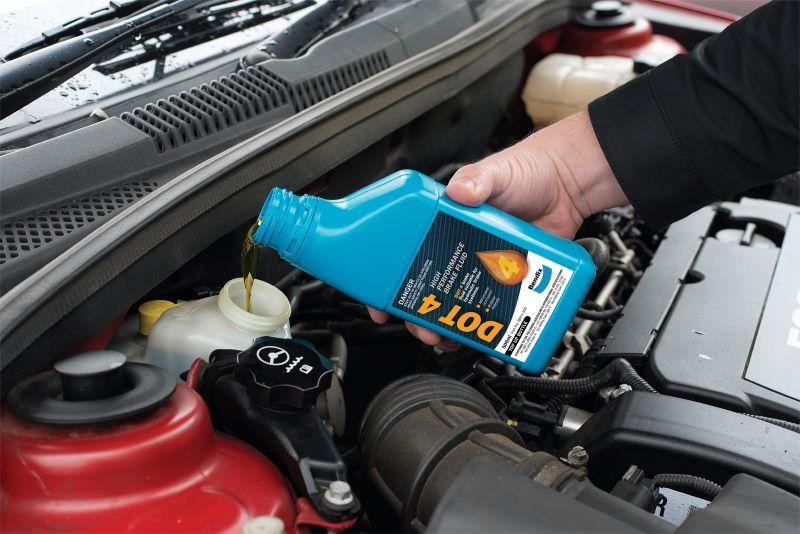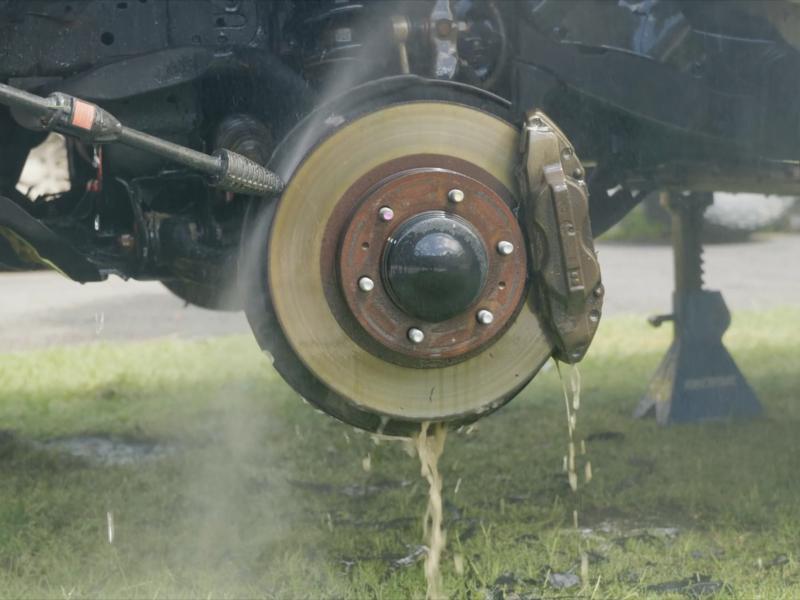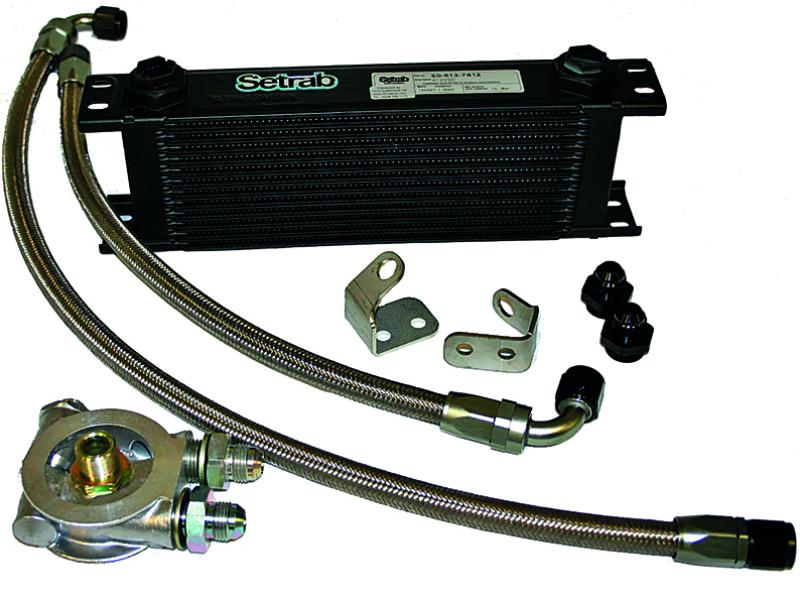Brake fluid is a type of hydraulic fluid and serves several important purposes within modern braking systems.
Its main task is to transfer force – when the brake pedal is pressed, it activates the brake master cylinder which pushes pressurised brake fluid through the brake lines and ultimately to the brake calipers which apply pad pressure to the disc brake rotors. Brake fluid is non compressible, ensuring that the pressure that’s applied at the pedal is maintained to deliver the necessary braking force to safely bring a vehicle to a standstill.
A secondary purpose of brake fluid is to lubricate all the moving parts within the braking system, helping to protect it against rust and other corrosion. It also helps dissipate heat within the system, leading to reliable and predictable braking performance.
Like most fluids and oils used in a vehicle, the brake fluid should be periodically changed to ensure it remains fresh and uncontaminated, which in turn ensures the braking system is operating at its full potential.
Although the braking system is classed as a closed system, over time it’s impossible to keep out small amounts of moisture which can be absorbed from the air through imperfect seals, microscopic holes in rubber hoses or even when the cap is left off the fluid reservoir for too long. Eventually the moisture mixes with the brake fluid increasing its water content; this reduces its ability to protect the braking system’s internals against corrosion, it also lessens the fluid’s boiling point which reduces performance.
Replacing the braking fluid
Owners should consult their service manual to learn more about their vehicle’s brake fluid changeover schedule, or if they are experiencing a decline in braking performance, visit their local service centre or brake specialist who will properly diagnose the issue. In diagnosing a braking issue, the technician may perform a brake fluid test to learn if it’s still providing the necessary protection and performing as it should. To do this, the mechanic or technician will use an electronic brake fluid tester, dipping it into the brake fluid reservoir – the tool then analyses the quality of the fluid. More basic ‘strip’ tests are also available, which perform a similar function.
If the brake fluid does need replacing, your technician will specify a fluid that’s in keeping with the vehicle’s OEM parameters because not all brake fluids are the same. A visit through any automotive retail outlet reveals the wide selection of replacement brake fluids available on the market, and each will include a ‘DOT’ reference on the labels: DOT 3, DOT 4, DOT 5 and DOT 5.1.
What is DOT?
DOT refers to Department of Transport, it’s a standard that sets the safety regulations that are acceptable for different brake fluids, and the DOT ratings given to a brake fluid are based on the fluid’s wet and dry boiling points. A reference point for dry boiling point is when the fluid is brand new, while wet boiling point is when the fluid is 1-2 years old and already has some moisture content. As an example, dry boiling temperature for a DOT 4 fluid would be over 230°C, while the wet boiling temp could be closer to 155°C.
Generally speaking, the higher the DOT rating, the higher the boiling point and longevity of the fluid. Before rushing off to buy the highest DOT fluid though, consult the vehicle owner’s manual because some brake fluids are incompatible with different brake lines and systems.
DOT 4 fluids are the most widely used – Bendix offers both high performance Polyglycol DOT 3 and DOT 4 fluids, providing optimum performance in both hydraulic and conventional braking systems, meeting stringent Australian and U.S specifications.
To learn more, visit: www.bendix.com.au/product-range/brake-fluid







